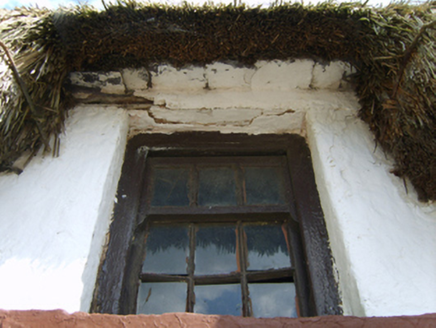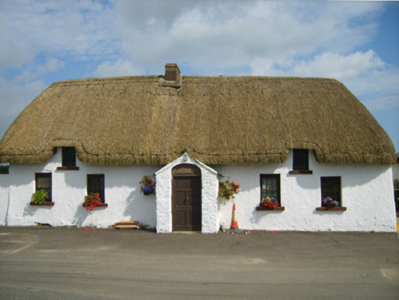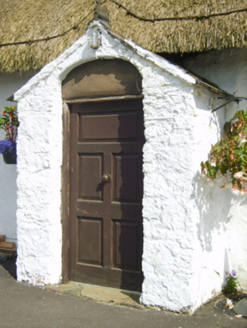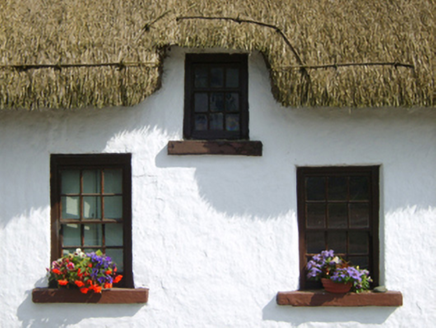Survey Data
Reg No
15702726
Rating
Regional
Categories of Special Interest
Architectural, Social
Original Use
House
In Use As
House
Date
1842 - 1901
Coordinates
308752, 134635
Date Recorded
28/08/2007
Date Updated
--/--/--
Description
Detached three-bay single-storey lobby entry thatched house with dormer attic, occupied 1901, on a T-shaped plan centred on single-bay single-storey gabled windbreak. Reroofed, ----. Now disused. Replacement hipped oat thatch roof overhanging lean-to roofs to window openings to dormer attic with chicken wire-covered paired exposed hazel stretchers to ridge having exposed scallops, red brick Running bond off-central chimney stack having stepped capping, and exposed hazel stretchers to eaves having exposed scallops. Limewashed lime rendered battered walls; limewashed cement rendered surface finish to rear (east) elevation with repointed rubble stone battered buttress. Square-headed central door opening in elliptical-headed recess with concealed dressings including timber lintel framing replacement timber panelled door. Square-headed flanking window openings with concrete or rendered sills, and concealed dressings including timber lintels framing six-over-six (ground floor) or three-over-six (dormer attic) timber sash windows having part exposed sash boxes. Set back from line of road with tarmacadam verge to front.
Appraisal
A house identified as an important component of the nineteenth-century vernacular heritage of County Wexford by such attributes as the compact rectilinear lobby entry plan form centred on a characteristic windbreak; the construction in unrefined local materials displaying a battered silhouette with sections of "daub" or mud suggested by an entry in the "House and Building Return" Form of the National Census (NA 1901; NA 1911); the somewhat disproportionate bias of solid to void in the massing; and the high pitched roof showing a replenished oat thatch finish: meanwhile, such traits as the symmetrical or near-symmetrical pattern of the openings convey aspirations to "gentrified" architecture (cf. ----). Having been well maintained, the elementary form and massing survive intact together with substantial quantities of the original fabric, both to the exterior and to the interior, thus upholding the character or integrity of a house making a pleasing visual statement as a familiar landmark in a rural street scene.







